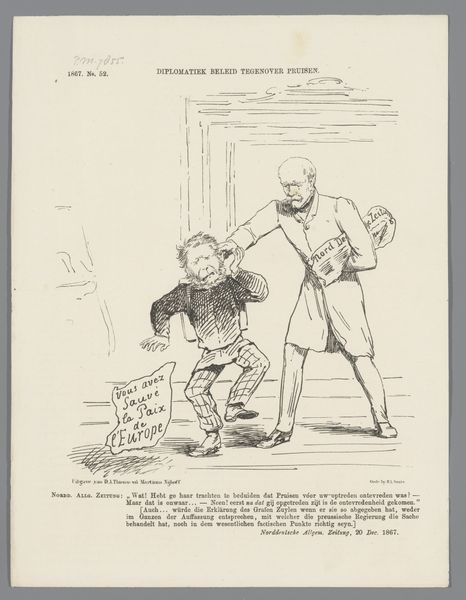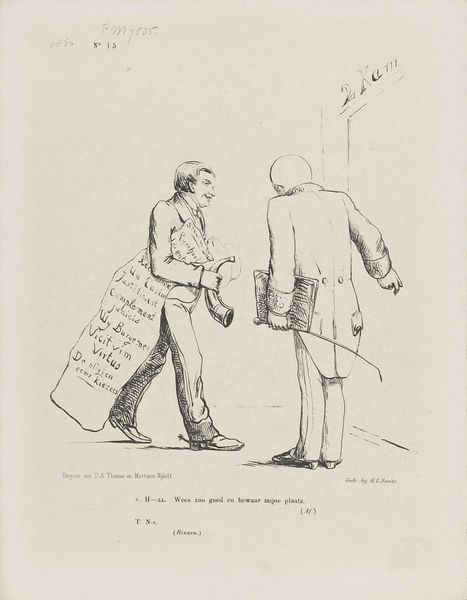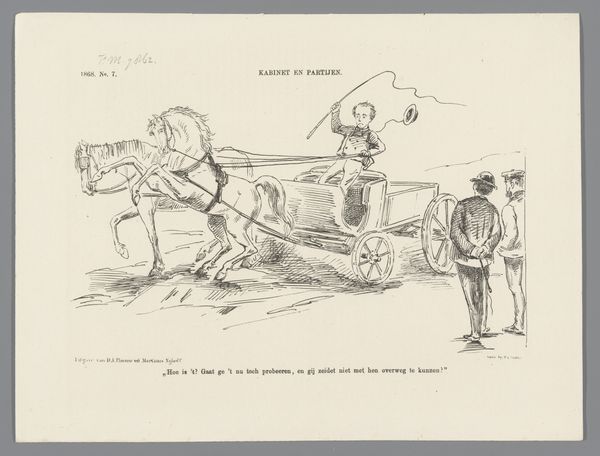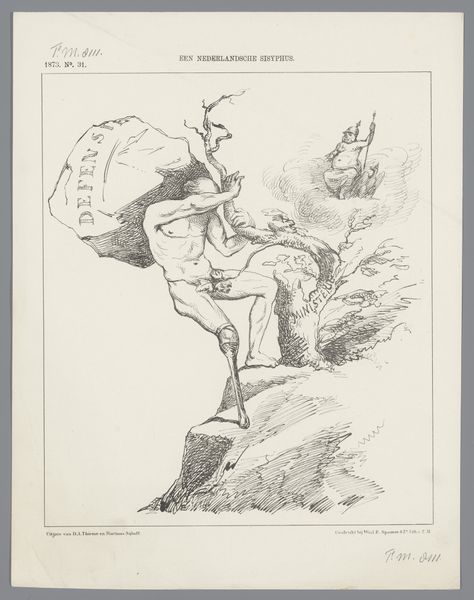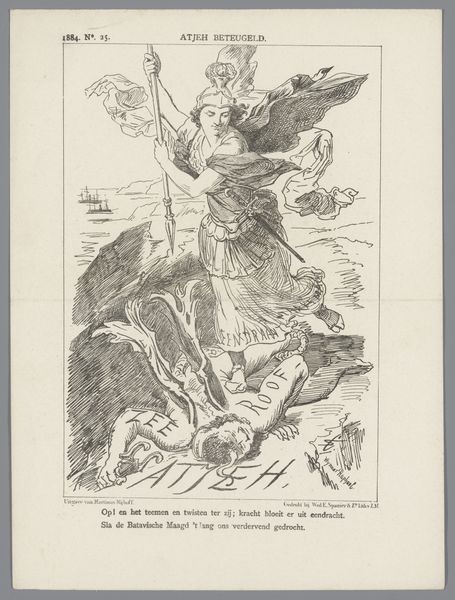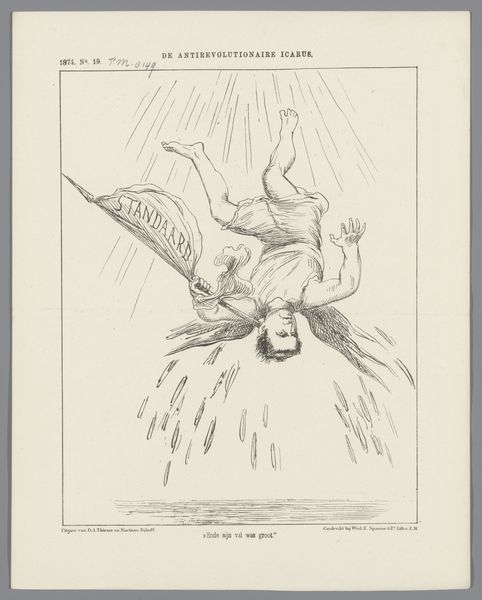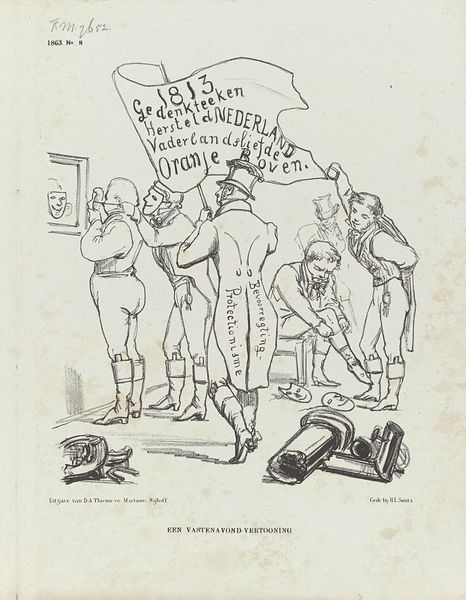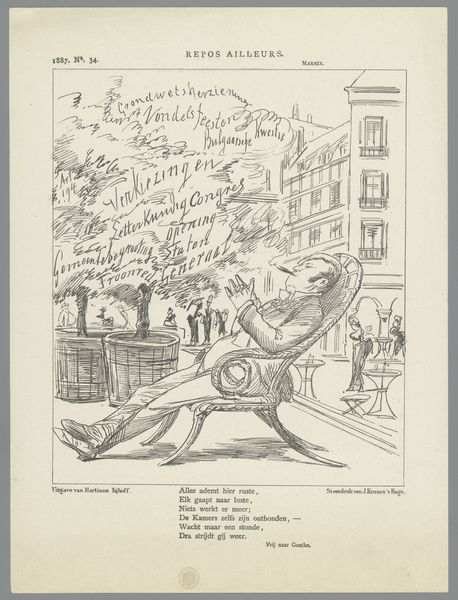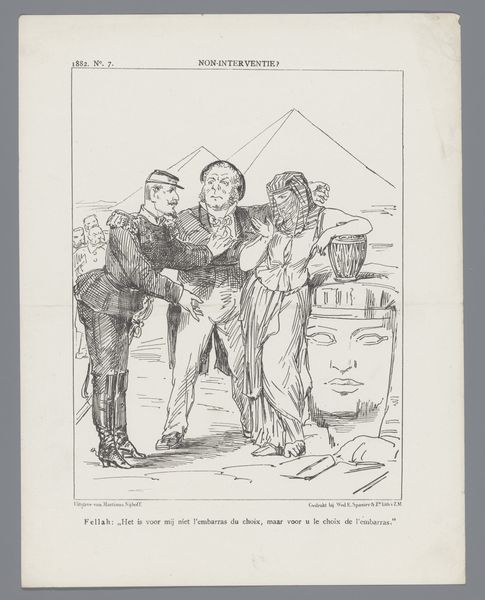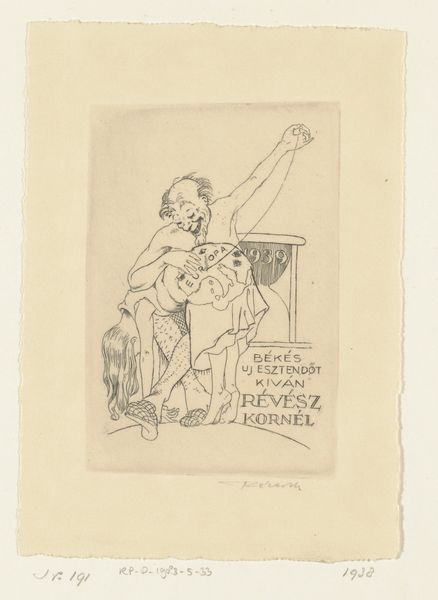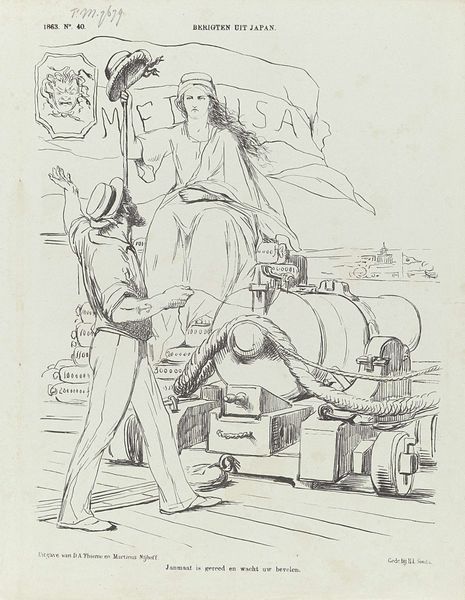
drawing, pen
#
drawing
#
comic strip sketch
#
imaginative character sketch
#
light pencil work
#
narrative-art
#
caricature
#
personal sketchbook
#
idea generation sketch
#
ink drawing experimentation
#
pen-ink sketch
#
line
#
sketchbook drawing
#
pen
#
history-painting
#
storyboard and sketchbook work
#
sketchbook art
Dimensions: height 275 mm, width 215 mm
Copyright: Rijks Museum: Open Domain
Curator: What a fascinating commentary on 19th-century Dutch politics. This is a cartoon titled "Spotprent op minister Fransen van de Putte," created in 1863 by Johan Michaël Schmidt Crans. It seems to be a pen and ink drawing. Editor: It's striking. The figure struggles, burdened, yet he maintains a certain resolve in his gaze. It projects a sense of dogged determination against what seems like overwhelming weight. Curator: Exactly. Johan Michaël Schmidt Crans captured the intense political climate surrounding Fransen van de Putte. His controversial policies relating to colonial administration stirred debate, making him the target of much criticism. You can see he's hauling what are labeled “1st Chamber” and “2nd Chamber." Editor: So those planks of wood represent the Dutch Parliament… heavily weighing down the minister? It almost takes on the symbolism of Christ carrying the cross. The weight of governance... the burdens of power laid bare. Is this a common visual metaphor? Curator: The political figures being crushed under governmental bodies is not unheard of, yes. In this case, Schmidt Crans uses Fransen's very visible physical strain to symbolize the difficult passage of colonial policy through parliament. Editor: He's rendered almost like a mythological Atlas carrying the weight of the world on his shoulders! The barren, sloped landscape just emphasizes his lonely plight. And with bare feet too. Is that significant, symbolically? Curator: Good eye. Depicting Fransen van de Putte barefoot could speak to vulnerability, an undermining of authority. A "common man," if you will. Consider how effective the cartoon would be to sway public sentiment against Fransen's colonial policies during this heated moment of discussion. It becomes almost an attack. Editor: It's a simple drawing, yet so loaded with meaning. I suppose the artist tapped into primal imagery of burden and sacrifice for dramatic effect. It's surprisingly contemporary, still speaking to the burden of political power and responsibility even today. Curator: Absolutely. The beauty of these political cartoons resides in their capability to encapsulate complex political dynamics using immediately graspable images. It shows us much about political sentiment, the artist’s beliefs, and what visual tools work on the people. Editor: To think such a fleeting image could speak so profoundly across time. A moment, burdened, yet remembered.
Comments
No comments
Be the first to comment and join the conversation on the ultimate creative platform.

